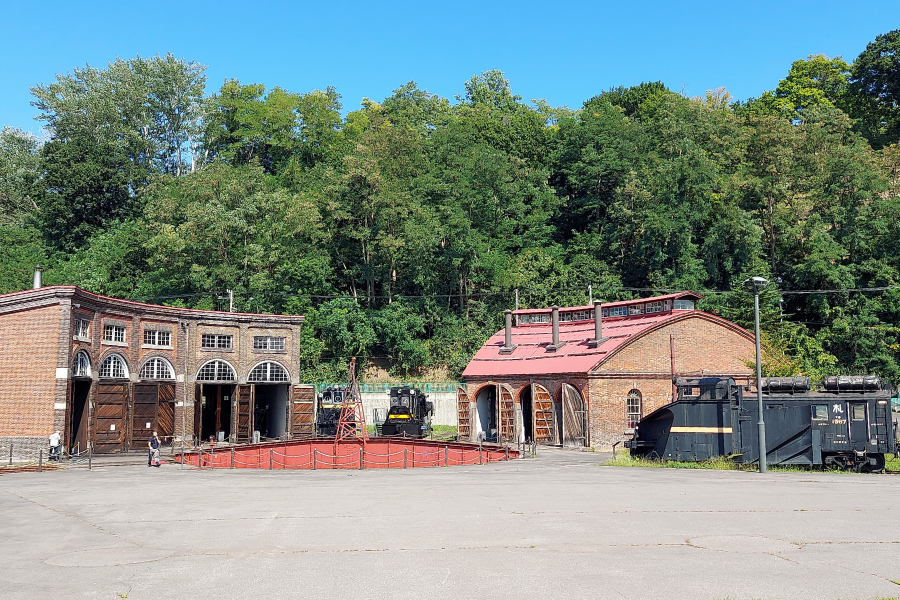
Former Temiya Railway Facility, Designated as a National Important Cultural Property
The Temiya Railway Facility in Otaru was built in the late nineteenth century to house and maintain Hokkaido’s first locomotives. It is now part of the Otaru Museum and explains the history of Hokkaido’s early railways through scale models, photographs, and original rail cars and steam locomotives.
In the late nineteenth century, American railway engineer Joseph Crawford (1842–1924) was hired to develop a railway line from the coal mine at Horonai (present-day Mikasa) to Otaru via Sapporo. The first section of the line between Temiya and Sapporo opened in 1880, and the full line was completed in 1882.
Several structures at the facility are designated Important Cultural Properties. These include Japan’s oldest surviving brick depot (1885), with bays for three locomotives, and another brick depot (1908) which houses five. The doors of the depots open to a steel turntable (1919). The turntable is now used to operate The Iron Horse steam engine, which makes several runs a day on a section of track on the museum grounds.
Other structures on the grounds include a water tank constructed around 1916 that supplied steam locomotives, utilizing a gravity-fed system. The stone warehouse was built around 1898 for storing flammable goods such as paint and petroleum. Part of the original retaining wall remains for an elevated pier that was constructed at the port in 1911 to facilitate loading coal from the railway into waiting cargo ships.
more Click here for the map